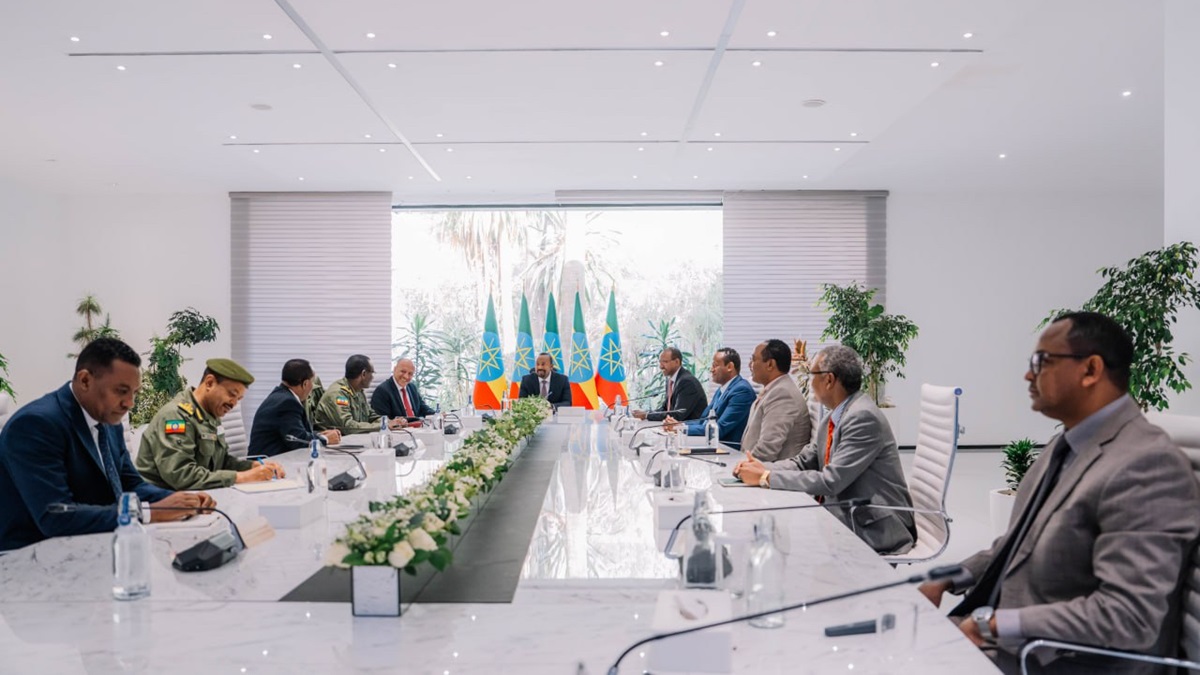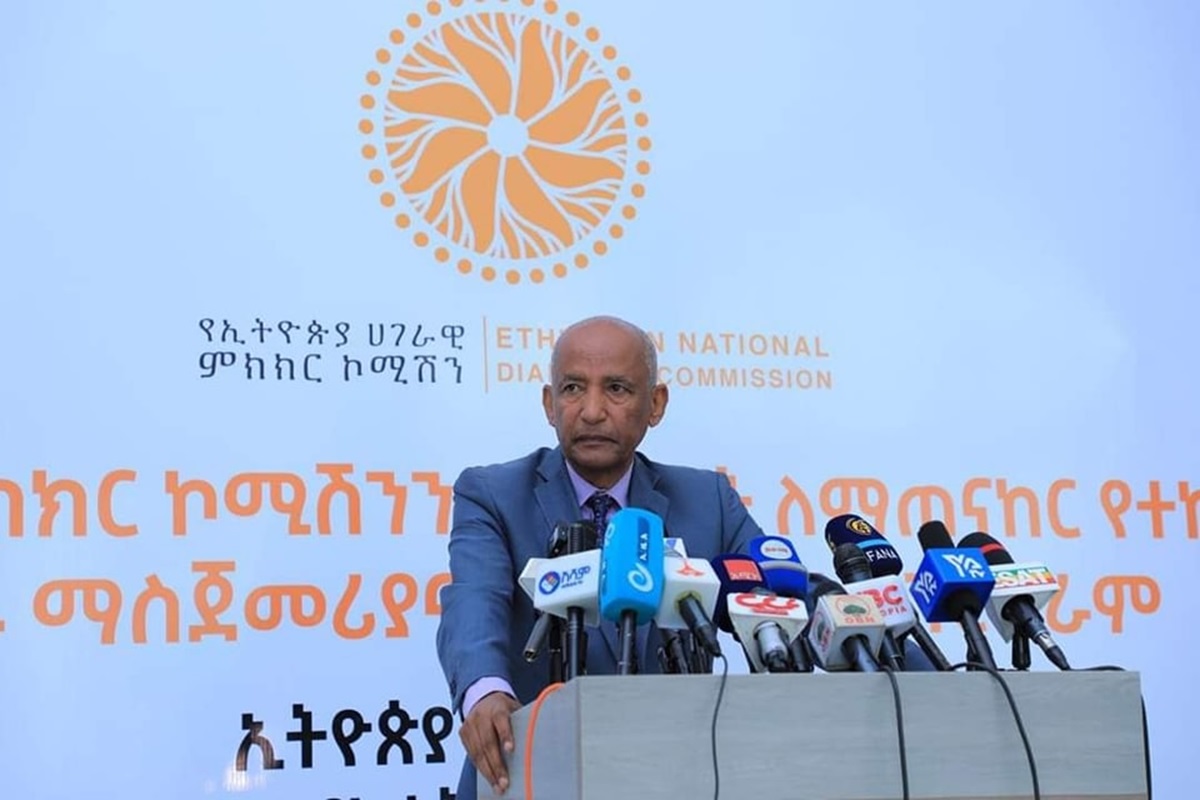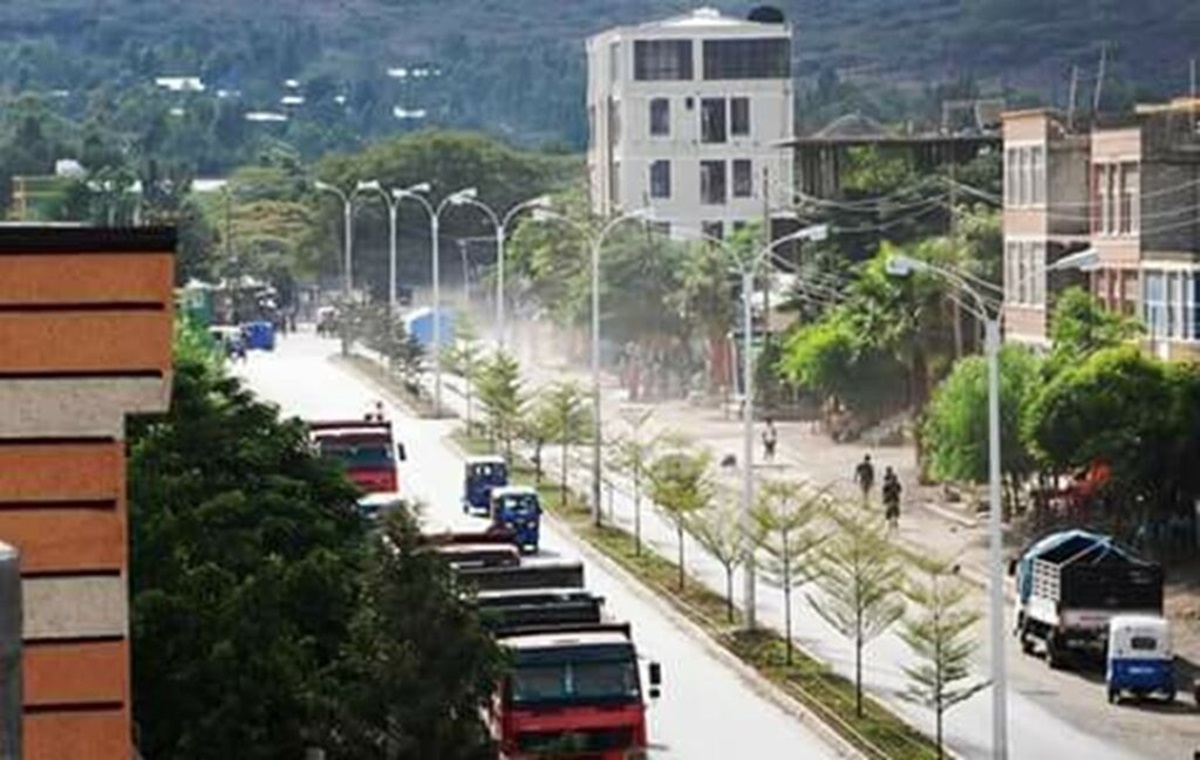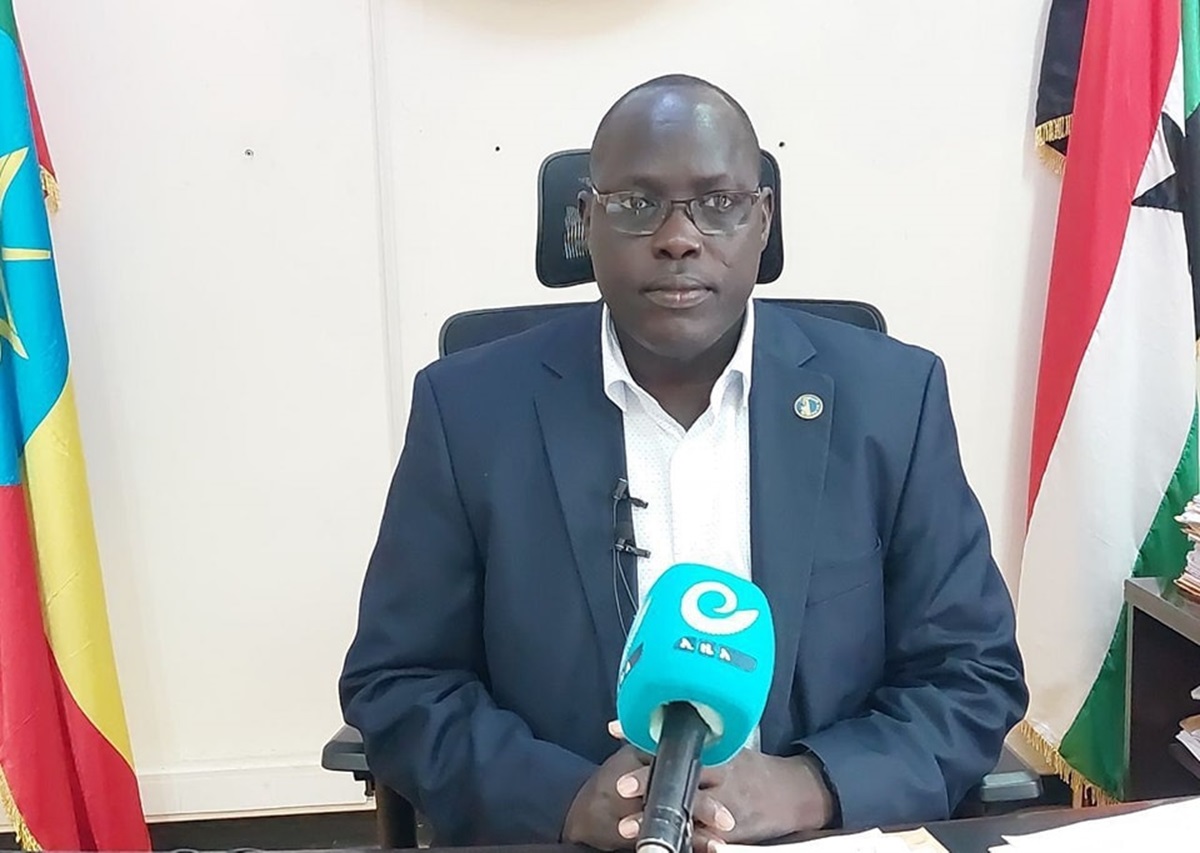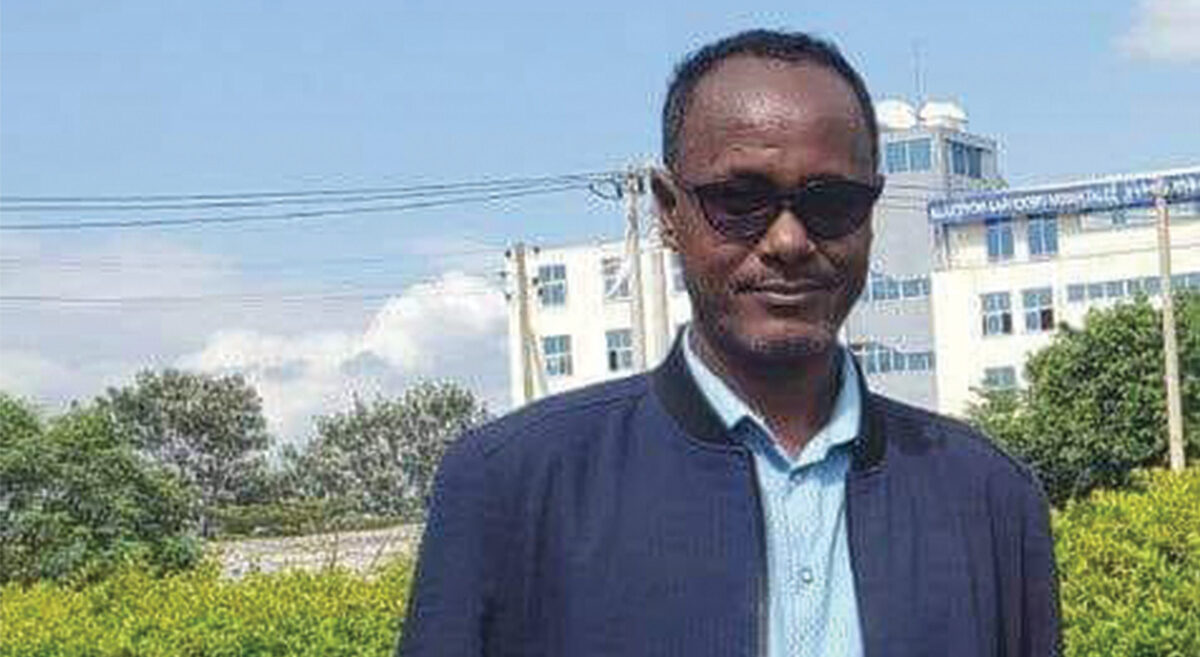Scorecard of the Implementation of the Permanent Cessation of Hostilities (CoHA)

By Mehari Taddele Maru @DrMehari
Addis Abeba – On February 9, 2024, the Government of Ethiopia (GoE), the recently formed Tigray Interim Regional Administration (TIRA) and the Tigray People’s Liberation Front (TPLF) convened a joint meeting. Its purpose was to discuss the implementation of the Cessation of Hostilities Agreement (CoHA) signed by GoE, TPLF and AU mediators on November 2, 2021, in Pretoria, South Africa.
This latest meeting, understood to be the ‘political discussion’ mentioned in the CoHA text, is a step towards effective implementation of the CoHA. Unlike past informal talks, these discussions were publicized in state media. It is nevertheless unclear whether or not the meeting followed established processes, which normally would include a formal agenda and a matrix for the implementation of any decisions on the outstanding tasks in CoHA; because any conclusions that may have been reached remain undisclosed.
Regardless of the meeting and its outcomes, public statements from various elements of the GoE, as well as from TIRA and TPLF, point to simmering tensions over critical provisions of the CoHA. A lack of transparency, exemplified by the absence of an official, comprehensive joint report on the results of the discussions, is worrying in that it encourages conjecture, promotes propagation of falsehood, and potentially deepens distrust.
Rather than offering a comprehensive review and assessment, the aim of this piece is to take stock of successes and failures in the implementation of CoHA and to identify key unaccomplished tasks, obligations, and further hurdles. In particular, these are the removal of Amhara and Eritrean forces from Tigray; the return of internally displaced persons (IDPs) and repatriation of refugees; the provision of justice and accountability for atrocities committed during the conflict; and disarmament, demobilization and resettlement (DDR) of combatants. The CoHA has yet to accomplish these four primary tasks.
The optimism at first engendered by CoHA was soon tempered by evident slow progress in its implementation. Granted the silencing of the guns and the post-Pretoria establishment of TIRA, a lack of political will continues to hamper CoHA’s implementation. Consequently, although CoHA brought about negative peace (that is, ended overt warfare), positive peace (the realization of attitudes, institutions and structure that create and sustain peaceful societies) remains to be achieved. This can be done only by accomplishing the remaining tasks under CoHA, addressing the root causes of the war, investigating atrocities, ensuring justice and accountability and fostering reconciliation.
What progress has been made in the implementation of CoHA is mainly due to compliance by the Tigray side (for instance, agreeing to the restoration of federal authority in Tigray through the deployment of federal army and enforcement bodies). The Federal government’s failure to comply with critical obligations, such as restoring its occupied territories to Tigray and returning IDPs, indicates a serious lack of progress. Equally notable has been GoE’s reluctance to hold accountable those responsible for wartime atrocities.
A lack of significant progress in executing the CoHA, taken with continuing challenges in its implementation, can lead to disagreement on whether or not any particular obligation laid down in the CoHA is a shared priority that receives political support from both parties to the agreement.
Obligations that have been identified as commonly shared priorities, such as silencing the guns and the formation of TIRA, have fared better than others. In particular the return of Tigrayan territory and of IDPs, although prioritized by the Tigray side, have been impeded primarily by the GoE but have also faced significant opposition from the Eritrea and Amhara side. In further contrast, other obligations that garnered limited political will – primarily the accountability for atrocities – have not materialized, despite demands from victims of criminality and from the Tigrayan population at large.
Effective implementation is also a function of the trust, priorities, political and military power and financial incentives that shape the relationship between the parties. Despite meager financial support from the global community, implementation thus far shows that CoHA could possibly bring peace to Tigray. Furthermore, it has become evident over the past 15 months that the agreement enjoys robust public, diplomatic and political support, despite the uneven and selective execution of its initiatives. The failure of the GoE to fulfill some key responsibilities is a significant hindrance to the achievement of lasting peace, especially in the aftermath of the war in Tigray and ongoing conflicts in Amhara and Oromia.
A collapse of CoHA could plunge the region further deeper into war. Such a situation carries the risk of exacerbating the regionalization of conflicts. Countries such as Eritrea, Saudi Arabia, Somalia and Egypt might then align against Ethiopia, aside from the possible involvement of the breakaway Somaliland, the Rapid Support Forces (RSF) armed faction in Sudan, which allegedly enjoys backing from the UAE. The severe humanitarian and geopolitical repercussions of any such eventuality are further influenced by shifting alliances within Ethiopia and beyond its borders. Such a situation carries the risk of exacerbating the regionalization of conflicts.
Hence this piece argues that imperfect as it is, if fully implemented the CoHA represents the most viable path to peace. That critical obligations remain unmet is due mainly to a low level of compliance from the GoE side due to lack of political will. Overcoming this barrier is central to addressing the agreement’s key challenges. Insights on generating political will can be drawn from comparative examples of conflict resolution, including those of Bosnia and Colombia. Hence the paper proposes the formation of a ‘Friends of the CoHA’ grouping, aiming to attract robust international engagement in ensuring effective implementation of the agreement. This process would entail supporting and urging parties to comply with the COHA, coordinating monitoring efforts and helping to meet time-bound benchmarks. Such an approach would help avoid the common pitfall of continuous, open-ended ‘political dialogues’ that may lead “Death by Meeting,” as Patrick Lencioni labels it, and foster endless brinkmanship while conditions deteriorate on the ground.
The goals of CoHA
The ultimate goal of the CoHA could be summed up as a return to the status quo ante. The agreement’s core components are defined in six areas: (1) Security, including the cessation of hostilities and the removal of external forces from Tigray; (2) Constitutional status quo ante, reaffirming the sovereignty of Ethiopia and the legitimacy of GoE control over Tigray (along with the restoration of Tigray’s administration to all constitutional territories, DDR, return of refugees and IDPs and restoration of federal authority in Tigray); (3) Provision of humanitarian aid; (4) establishment of political dialogue, encompassing replacement of the Tigray government with an interim administration and addressing constitutional matters; (5) transitional justice; and (6) post-war reconstruction and development.
Security: Regarding security, the parties have largely adhered to the injunction to silencing guns. The current arrangements cannot, however, be considered a permanent ceasefire as long as Tigray’s constitutional territories remain under the control of Amhara and Eritrean forces (more than two administrative zones and 50 Kebeles [neighborhood associations] in Western and Southern Tigray remain under Amhara and Eritrean military occupation or are displaced). Although the AU has confirmed the disarmament of the paramilitary Tigray Defense Forces (TDF) and some of its members have been disarmed and demobilized, their reintegration remains unmet, mainly due to a lack of funding and of the political will to implement the procedure.
Constitutional status quo ante: As stipulated under CoHA, the sovereignty of the Ethiopian state and the legitimate authority of the federal government over Tigray have been reasserted through the deployment of federal forces, and the replacement of the Tigray government by TIRA. Although delayed due to extensive consultations, the formation of TIRA was a significant achievement.
TIRA is facing multiple hurdles. One of them involves management of the more than one million IDPs residing in makeshift camps, mainly located in schools, since the signing of the Agreement. TIRA also faces a lack of the funding needed to reestablish government structures; to resume the provision of basic utilities, health and education services; to pay government employees; and to begin rebuilding infrastructure.
A return to the constitutional status quo has not yet been accomplished. GoE has not publicly called on Eritrean forces to withdraw from Tigrayan areas under their occupation nor has it returned Tigrayan administrative authority to areas occupied by Amhara forces. Instead, it has indicated an intention to hold a referendum in these areas; a proposal that TIRA dismissed as unconstitutional and in breach of CoHA principles, moreover, pointing out that as interim government it lacks the mandate to negotiate constitutional issues such as boundaries.
Humanitarian aid: Humanitarian aid has been inconsistent in delivery and suspended for extended periods. Combined with the massive displacement, livelihood disruption and asset destruction during the war, this has led to thousands dying from starvation. In December 2023 TIRA warned of impending famine and appealed for aid but the GoE has refuted allegations of deaths from starvation. This position has hampered relief efforts: If not urgently addressed, famine could claim thousands more lives.
Transitional justice: The CoHA has institutionalized impunity citing the GoE’s ‘Transitional Justice Policy’ which both Tigray and the UN International Commission of Human Rights Experts on Ethiopia (ICHREE) have rejected as ‘quasi-compliance’ in that it deflects scrutiny and avoids accountability. Indeed, the GoE has succeeded in deflecting probes and terminating the mandate of ICHREE and AU a Commission of Inquiry. ICHREE has emphasized that overcoming reluctance to investigate crimes under international law demands continued oversight.
A wide rift persists between the GoE on the one hand, and on the other, Tigrayans demanding justice. Bridging this gap will require an international mechanism. Without post-war accountability, a continual recurrence of atrocities remains a threat: The journey towards a lasting peace demands a high degree of certainty and measure of accountability.
Reconstruction and development: A lack of resources has meant that no post-war rebuilding effort has begun. Schools officially reopened in September 2023 but millions of children were still out of school due to displacement: More than 100 schools had become makeshift camps and 552 in Amhara and Eritrea-occupied areas of Tigray were inaccessible. As for reconstruction, only minor cement production and road works have resumed (in Mekelle).
Elements of political dialogue
Progress on shared priorities: Despite progress on shared political and security priorities, CoHA has failed to return Tigray to its pre-war constitutional position; moreover, under the guise of transitional justice, it has legitimized and institutionalized immunity for perpetrators of atrocities.
Lack of political determination: Challenges in implementing CoHA arise mainly from a failure in political will. This situation highlights the urgency for decisive political action to enforce CoHA directives. Christine Bell, a distinguished legal scholar specializing in peace agreements, contends (in Peace Agreements: Their Nature and Legal Status) that waning political will is often the cause of slippage in peace agreements. If leaders lack the commitment to uphold compromises, mere written agreements cannot guarantee effective execution. In the Ethiopian case, demonstrating effective political will requires tangible actions over key CoHA commitments. It is essential to establish and consistently review clear, robust benchmarks and timelines while ensuring that outcomes are openly communicated to the public. If this is to happen, the newly-arranged political dialogue must be formalized and institutionalized. It must produce a detailed scorecard together with an implementation matrix as an effective tool for managing, tracking, and reporting milestones along the way to a permanent peace.
Sustaining peace: The present condition of Tigray is marked by famine, containment, and dissatisfaction over the lack of progress in areas of CoHA critical to a sustained peace. The state of relations between GoE and Tigray can be described as détente characterized by coexistence and management of conflict without resort to military action. The relationship is, however, still notable for hostile rhetoric, distrust, and accusations of indulging in proxy war. Hence CoHA is essential for preventing a return to war and fostering peace; but obviously its effectiveness depends mainly on the timeous implementation of its rulings. The presence within Tigray of Eritrean and Amhara forces continues to pose a significant barrier to peace and stability, intensifying existing tensions and hampering efforts to build trust. More importantly, TIRA’s legitimacy depends on its fulfilling Tigray’s fundamental demands and in particular the GoE’s non-compliance weakens TIRA’s credibility. Furthermore, a failure to resolve issues such as the return of territory, human displacement and ensuring accountability and justice carries with it a substantial risk of a relapse into war.
It is the GoE’s failure to carry out its central obligations under CoHA that is hindering a return to a sustainable peace. As Ethiopia struggles to deal with the aftermath of the genocidal war on Tigray while facing continued wars in Amhara and Oromia, CoHA teeters on the brink of collapse. Should this happen the humanitarian and geopolitical consequences would be dire, given the significant shift in the alliances of forces within and beyond Ethiopia. A relapse into war might involve -directly and indirectly – on one side Eritrea, backed by Saudi Arabia, Somalia, and Egypt, with Ethiopia, along with the UAE-supported RSF, on the other. The entry of those powerful actors could drastically alter the regional balance of power and escalate the conflict into a broader theater of war. Thus, the agenda for peace in Ethiopia carries with it global implications and should not be left solely to the CoHA signatories. The international community must build on CoHA’s gains and extend its involvement to include verification, monitoring, donor support and diplomatic pressure.
Generating political will: Despite recent apparent progress there is a palpable lack of genuine political will fully to implement CoHA. This undermines the sustainability of the peace process and leaves multiple obligations outstanding. During transitional situations, in which distrust runs deep, generating and maintaining political will is difficult. Lessons from other peace deals show that an instrument such as ‘Friends of CoHA’ might help improve the implementation of CoHA by applying collective pressure and providing diplomatic, financial, and technical support. The UN, US, EU, AU and the Intergovernmental Authority on Development (IGAD) among others, can assist implementation efforts through support for such a model, in the process promoting strategic coordination and building internal-external coherence around CoHA’s promises. AS
Editor’s Note: Mehari Taddele Maru teaches at the European University Institute, Italy. He is a frequent contributor to Addis Standard publications.


